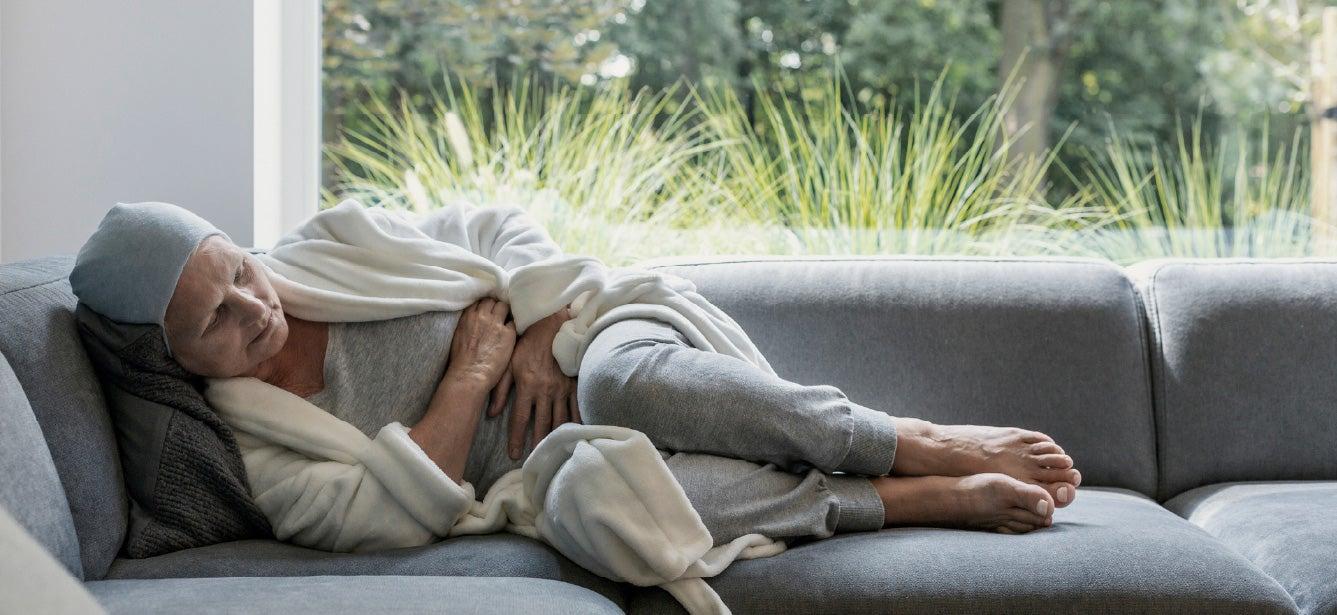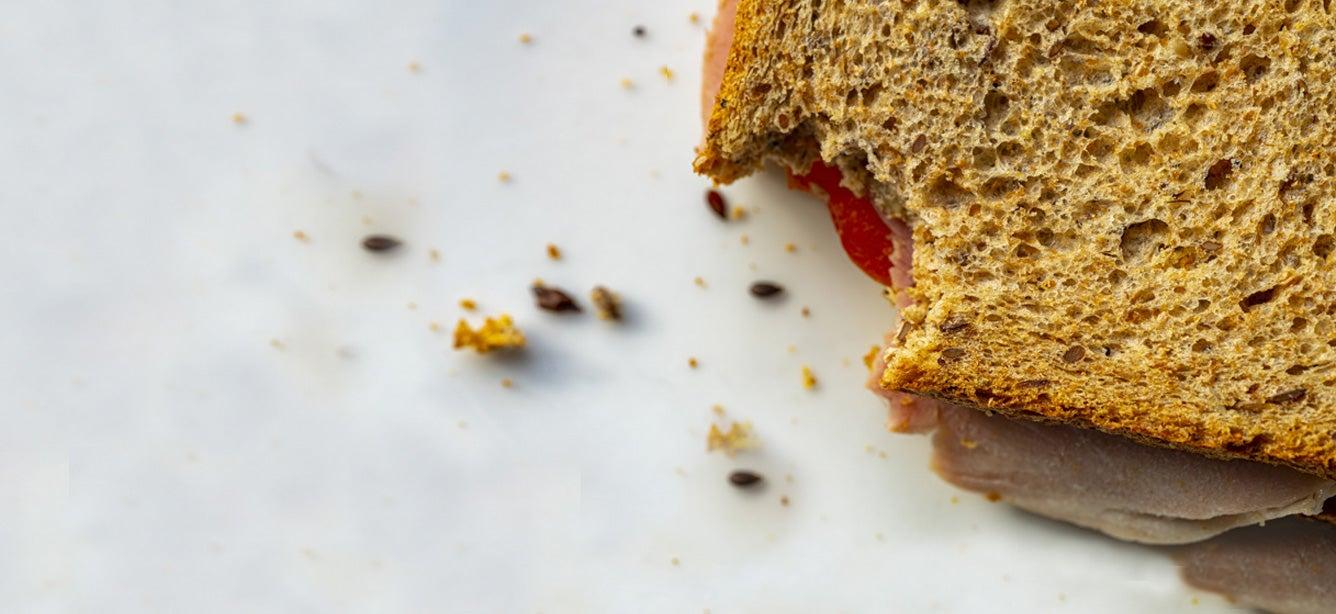
Related Topics
Most of us experience occasional aches and pains. But people with chronic pain deal with these sensations constantly, waking up each day in discomfort as they struggle to get through the simplest tasks. All of this takes a mental toll over time, bringing fatigue, frustration, and anger at being denied the basic right to a comfortable, pain-free existence.
Chronic pain—defined as pain lasting more than three months—is a widespread public health problem. According to the U.S. Pain Foundation, roughly 50 million American adults (20% of the population) live with chronic pain. Twenty million deal with pain that disrupts their daily functioning; this is known as "high-impact pain."1
Older adults are particularly vulnerable, since chronic pain increases with age. The National Institutes of Health (NIH) showed that 65% of U.S. adults over the age of 65 report suffering from pain—and up to 30% of older adults report chronic pain.2 A survey by the Centers for Medicaid and Medicare Services (CMS) found that 78% of Medicare enrollees have chronic pain, with women experiencing higher rates than men.3
Since chronic pain has mental as well as physical consequences, older adults who suffer from it are more likely to experience mental health disorders such as depression and anxiety. This was the topic of discussion during "The Link Between Chronic Pain and Mental Health in Older Adults,” one of the breakout sessions at our Older Adult Mental Health Awareness Day (OAMHAD) Symposium. This insightful panel brought together several experts to explore how chronic pain affects older adults’ well-being as well as solutions and resources that can help.
"Pain should not be seen as a natural consequence of getting older," said OAMHAD presenter Yvette Colón, PhD, professor and department member of Women's & Gender Studies and Faculty Affiliate for the Aging Studies Program in the School of Social Work at Eastern Michigan University. "It's one of the things that prevents people from addressing a good and high quality of life for our older adults."
What is the most common cause of chronic pain in older adults?
Chronic pain in older adults is most often caused by musculoskeletal conditions, neurodegenerative conditions, peripheral vascular diseases, and rheumatic disorders. According to Colón, the most prevalent pain conditions in older adults include:
- Arthritis and osteoarthritis
- Nerve damage/neuropathy
- Neck/lower back pain
- Cancer
Many people who suffer from chronic pain may have multiple sites of pain, which can make management of symptoms more complicated.
What are the consequences of chronic pain in older adults?
Older adults with chronic pain may struggle with impaired mobility, which limits their participation in daily activities. Limited mobility, along with the discomfort they experience, can lead them to withdraw from family and friends and become more socially isolated from their community.
Other consequences of chronic pain that lead to a lower quality of life include:
- Inability to work
- Increased risk of falls
- Sleep disturbances
- Reduced appetite
- Loss of independence
- Cognitive decline
In addition, “researchers think that the combination of reduced functioning and the consequences of living with pain result in a sense of loss, which significantly impacts mood,” Colón explains.
OAMHAD presenter Nicole Hemmenway, CEO of the U.S. Pain Foundation, said that pain denies older adults basic, everyday pleasures. “I hear from people who just want to attend their grandkid’s soccer game, who would like to go to church, who want to make a meal for their families, or even just receive a hug from a loved one. And yet pain has taken that from them,” she said.
Given their physical hardships, it’s unsurprising that people with chronic pain experience depression and anxiety at higher rates than people without chronic pain. In fact, roughly 65% of patients coping with depression also report at least one type of pain symptom.4 A 2019 survey found that symptoms of anxiety and depression co-occurred in 23.9% of American adults with chronic pain, compared to just 4.9% of those without chronic pain.5
"[Chronic pain] takes you to a place of confusion, isolation, and loneliness because you are separated from everybody and everything that you knew," explained presenter (and chronic pain survivor) Linda Shaw, author and Group Lead for the U.S. Pain Foundation's BIPOC Community Support Group. "Unrelenting pain reduces your ability to concentrate, socialize, sleep, work. It robs you of your peace and your joy."
Another way chronic pain impacts older adults' mental health lies in the patient-provider relationship. According to a 2022 survey from the U.S. Pain Foundation, many older adults with pain feel unsupported by those they entrust with their care. Fifty-nine percent (59%) of respondents said their current health care provider “doesn’t, sometimes, or rarely” listens to and validates their concerns. And just 38% of providers asked about patients' mental health.6
I have chronic pain. What can I do to improve my mental health?
Beyond traditional pain management approaches, there are many strategies you can use to manage your pain levels and improve your well-being:
Practice a healthy lifestyle: Eating a nutrient-rich and balanced diet, maintaining a healthy weight, and exercising as much as your pain allows can help you reduce inflammation and increase your mobility.
Get enough sleep: Lack of quality sleep can make your pain worse. You can improve your chances of restful slumber by sticking to a routine, avoiding daytime naps, and ensuring your sleep environment is cool and dark. You might also consider a new mattress for back pain.
Manage your stress: Pain and stress are intertwined. Practicing yoga, breathing exercises, journaling, and arts therapy (music, art, dance) can help you reduce stress levels and better cope with your discomfort. Meditation and mindfulness exercises are especially useful for dealing with pain's emotional effects. They can help improve your tolerance to pain and offer an "escape" from unpleasant and uncomfortable symptoms.
Join a support group: Sharing your lived experiences with other people who have chronic pain can relieve stress. It can make you feel more socially connected while helping you build the confidence to advocate for yourself. Peer-to-peer support groups are also a good way to learn new self-management tips that can help you take your life back from the grip of chronic pain. If you're unable to leave the house, many support groups are offered online. There are also groups available for caregivers and families of those living with chronic pain. Learn more by visiting the Pain Connection website.
Educate yourself: Knowledge is empowering. Learning all you can about best practices in pain care can help you effectively manage your pain, find a supportive community, and live a productive life in spite of your condition. A good place to start is the Resources page of the U.S. Pain Foundation website, where you can browse and download booklets, infographics, and handouts on a variety of topics related to chronic pain. The U.S. Pain Foundation also offers the Invisible Project website, where you can find personal stories from people living with all types of chronic pain—a powerful reminder that you’re not alone in your journey.
Seek therapy: Working with a licensed therapist can help you build your resilience and develop coping strategies that make it easier to live with chronic pain. There are many different types of therapy that have proven effective for people with chronic pain, including cognitive behavioral therapy (CBT), acceptance and commitment therapy, biofeedback therapy, and psychodynamic therapy. Some older adults benefit from medications to ease the symptoms of pain-associated depression and anxiety.
If you’re feeling overwhelmed with feelings of sadness and hopelessness, or if you’re having thoughts of self-harm, know you are not alone. For support anytime, day or night, you can:
- Dial or text 988 on your phone to speak to a trained counselor at the Suicide and Crisis Lifeline.
- Dial 1-800-662-HELP (4357) for referrals to local treatment facilities, support groups, and community-based organizations that can help you.
When it comes to supporting older adults with chronic pain, Colón embraces what she calls “relentless optimism.” She explains: "I often hear people who are so discouraged at hearing the phrase, 'There's nothing more that can be done.' And I think that I and lots of other people, the people here, would reject the idea that we can give up on people. There's always something that can be done to help somebody manage more effectively, to build their psychological resilience, and to enhance their coping skills.”
For more information on mental health and older adults, visit our Behavioral Health for Older Adults resource library.
Sources
1. U.S. Pain Foundation. Living Well With Chronic Pain. Found on the internet at https://uspainfoundation.org/wp-content/uploads/2019/08/Living-Well-with-Chronic-Pain-booklet.pdf
2. National Institutes of Health (NIH). Chronic Pain in Older Adults. Found on the internet at https://www.painconsortium.nih.gov/sites/default/files/documents/aging_and_chronic_pain_infographic_508.pdf
3. Chronic Pain in the Medicare Population Survey. Office of Enterprise Data and Analytics (OEDA) of the Centers for Medicare & Medicaid Services (CMS). June 2020. Found on the internet at https://www.norc.org/content/dam/norc-org/pdfs/2018MCBSCPQInfographic.pdf
4. Jennifer S. De La Rosa et al. Co-occurrence of chronic pain and anxiety/depression symptoms in U.S. adults: prevalence, functional impacts, and opportunities. PAIN. September 21, 2023. Found on the internet at https://journals.lww.com/pain/fulltext/9900/co_occurrence_of_chronic_pain_and.409.aspx
5. Harvard Health Publishing. Pain, anxiety, and depression. September 16, 2021. Found on the internet at https://www.health.harvard.edu/mind-and-mood/pain-anxiety-and-depression
6. U.S. Pain Foundation. A Chronic Pain Crisis: 2022 Survey Report. Found on the internet at https://uspainfoundation.org/wp-content/uploads/2022/07/A-Chronic-Pain-Crisis-US-Pain-2022-FINAL.pdf
This project was supported, in part by grant number 90CSSG0048 and 90FPSG0051 from the U.S. Administration for Community Living, Department of Health and Human Services, Washington, D.C. 20201. Grantees undertaking projects under government sponsorship are encouraged to express freely their findings and conclusions. Points of view or opinions do not, therefore, necessarily represent official Administration for Community Living policy.



